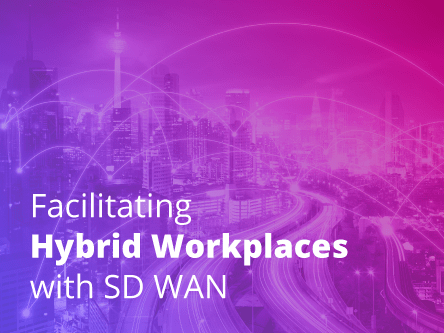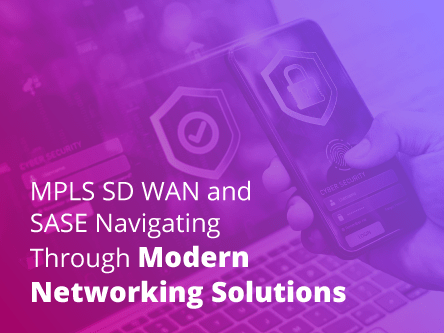Virtual Private Networks (VPNs) have been popular among enterprises as a cost-effective, secure, and reliable way to communicate and collaborate from anywhere, anytime over the Internet. And this was long before the pandemic struck and changed the way work was done. There is no doubt, then, VPNs were the immediate natural choice for enterprises when remote working became a new normal.
While site-to-site VPNs enabled enterprises to connect securely, they quickly realised VPN’s shortcomings when they attempted to scale up as their large workforce was working remotely. These included challenges pertaining to accessibility, scalability, gateway limitations, and underlying network performance. As a result, enterprise productivity suffered.
What enterprises failed to perceive at the time that VPN was always meant to take care of privacy and short duration needs for a limited number of users. It was never suitable for enterprises seeking business continuity with a large-scale remote workforce.
VPNs: 4 Common Disadvantages
Internet-based VPN technology has several limitations that make it unfit for large scale remote workforce needs:
1. Network Complexity Hampers Scalability
As your remote workforce grows, you’ll need to scale up network infrastructure – a common challenge with VPNs. The extensive usage of VPN puts an extreme load on gateways and the servers they reside in, affecting their response time and even their accessibility. Installing additional network infrastructure—such as split tunnelling, WAN optimisers, additional security appliances, more VPN servers—all add up to more complexity. The reality is site-to-site connectivity with an internet-based VPN can work only in limited locations.
2. Unpredictable And Unreliable Performance
As VPN connections work over the public Internet, the network performance is directly impacted by Internet performance. Challenges about latency, packet loss and jitter can have a negative impact on the performance of mission-critical apps and the user experience.
3. Poor Access Controls
VPNs use IP Security Protocol and Transport Security Layer Protocol to tunnel Internet traffic, which is considered safe. The problem is they lack granular-level securityThat implies once a user connects using VPN, they have almost unrestricted access to the rest of the subnet due to their inadequate access control mechanisms, resulting in users’ unauthorised access to confidential business-sensitive data.
4. Limited Network Visibility
It is critical to have a granular view to network data flow to providing security and avoiding potential downtimes. However, with VPN, IT managers are left in the dark when it comes to a large chunk of their data flow in the network. The challenge intensifies as more mobile users connect to the network remotely, further limiting corporate oversight and auditing capabilities.
SD-WAN: A Powerful New Age Alternative To VPN
So how should the IT team build networks to support an increasingly remote workforce? SD-WAN could be an ideal alternative.
SD-WAN, or a Software-Defined Wide Area Network, is a network that connects geographically distributed locations and employees using WAN connections such as Ethernet, Broadband, DIA or MPLS. It separates traffic based on security, authority, and quality of service and removes the need to rely on enterprise data centres and routers. This allows SD-WAN to offer flexible scalability and bandwidth capabilities over traditional networks such as VPNs.
SD-WAN vs VPN: Scalability
SD-WAN technology addresses scalability challenges by providing a centralised, integrated orchestration, converged, and cloud-native infrastructure. Enterprises can provision sites in minutes without adding complexity to the network. And unlike VPNs, there is no need to configure additional tunnels between locations. As a result, with SD-WAN, enterprises can scale up significantly faster compared to VPN-based infrastructure.
SD-WAN vs VPN: Performance Predictability
A major drawback with VPN-based WANs is that users can experience significant latency due to the distance between sites as well as spikes in congestion. This results in a dip in the network’s performance. Furthermore, VPN lacks network optimisations and control features that modern SD-WAN can offer, such as Dynamic Path Selection, WAN optimisation, Application-aware Routing and WAN and application visibility. As a result of these shortcomings, VPN suffers from jitter and data packet loss, making it an unreliable solution.
Many SD-WAN solutions can improve or repair the impact of a poor network by providing a number of functions such as packet replication and service boost.
SD-WAN vs. VPN: Cost and Maintenance
VPN is an inexpensive solution only when requirements are for a few sites and a limited number of users. However, the complexity created while scaling VPN eliminates the expected cost savings. Additionally, VPN configuration requires extensive manual work like IPsec tunnelling, Internet Key Exchange, and NAT-T (Network Address Translation Traversal). This requires a high level of expertise to configure securely and scale, and eventually, enterprises make massive investments.
SD-WAN vs. VPN: Visibilities
Each VPN is an independent connection. This can be challenging for IT managers as it hinders their visibility into enterprise’s network traffic unless these capabilities are specifically built into a VPN solution. SD-WAN, on the other hand, enables application and user-level visibility to network data flow at the granular level.
Final Words
While VPN can meet specific remote working needs, they are not designed to meet the demands of modern digital businesses. Cloud-based SD-WAN, on the other hand, can help enterprises get most of their network by adopting a more optimised, secure, scalable approach.







